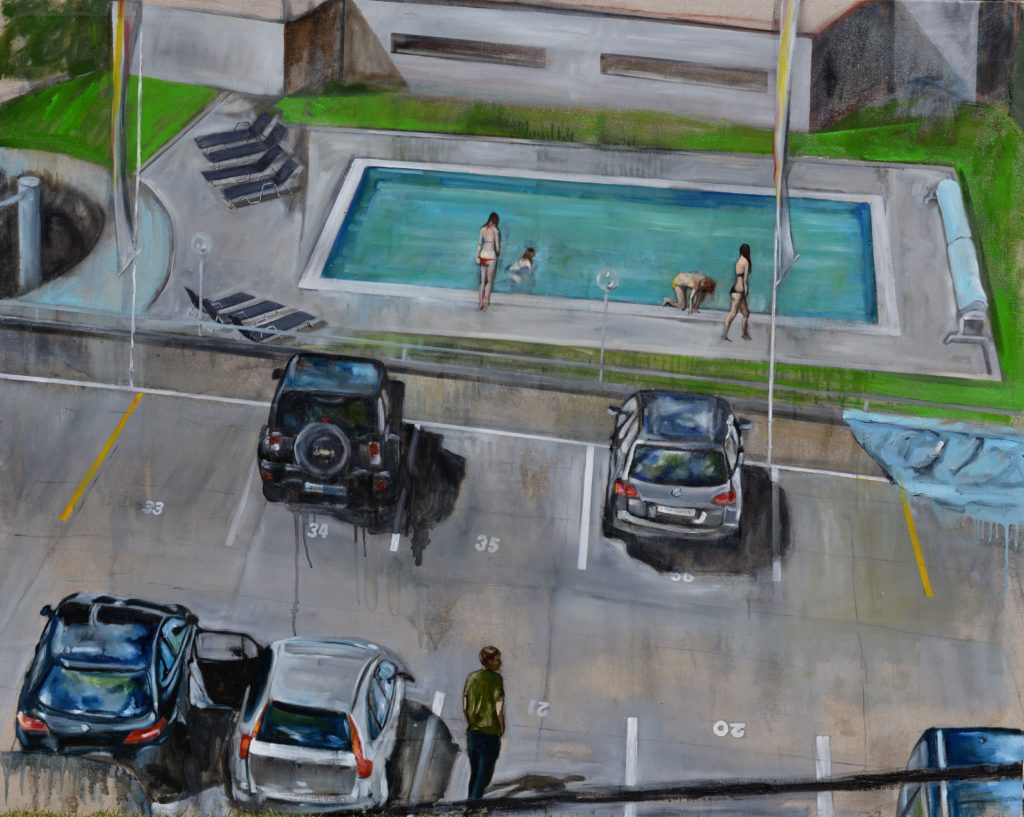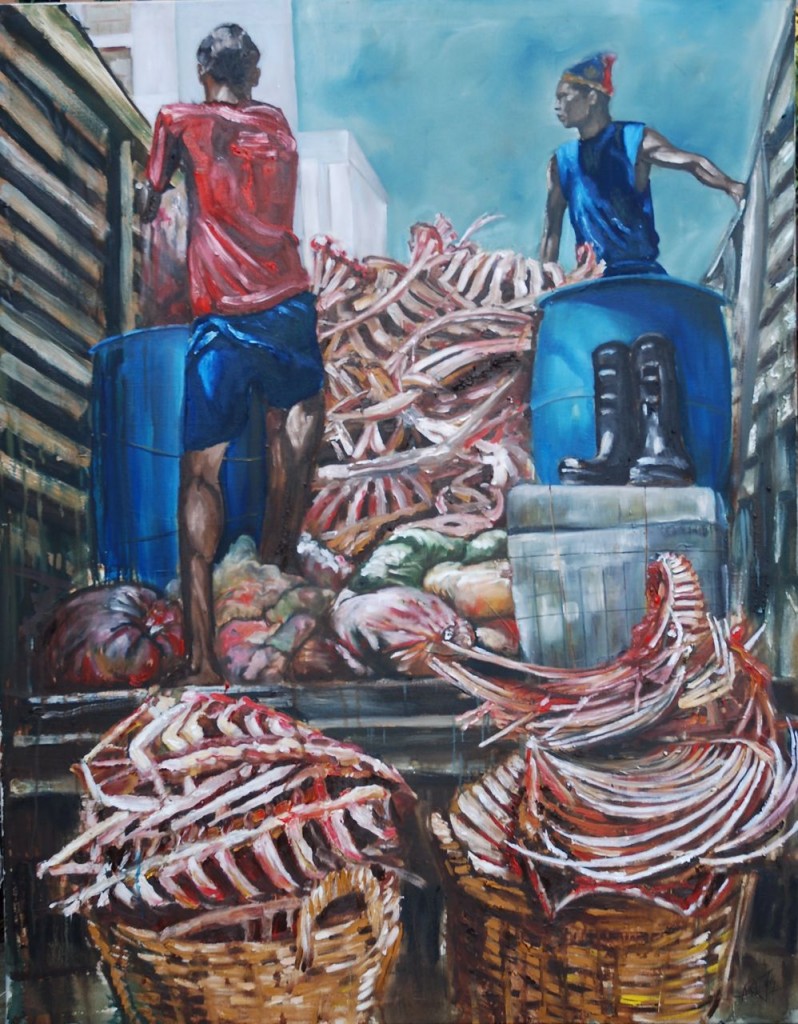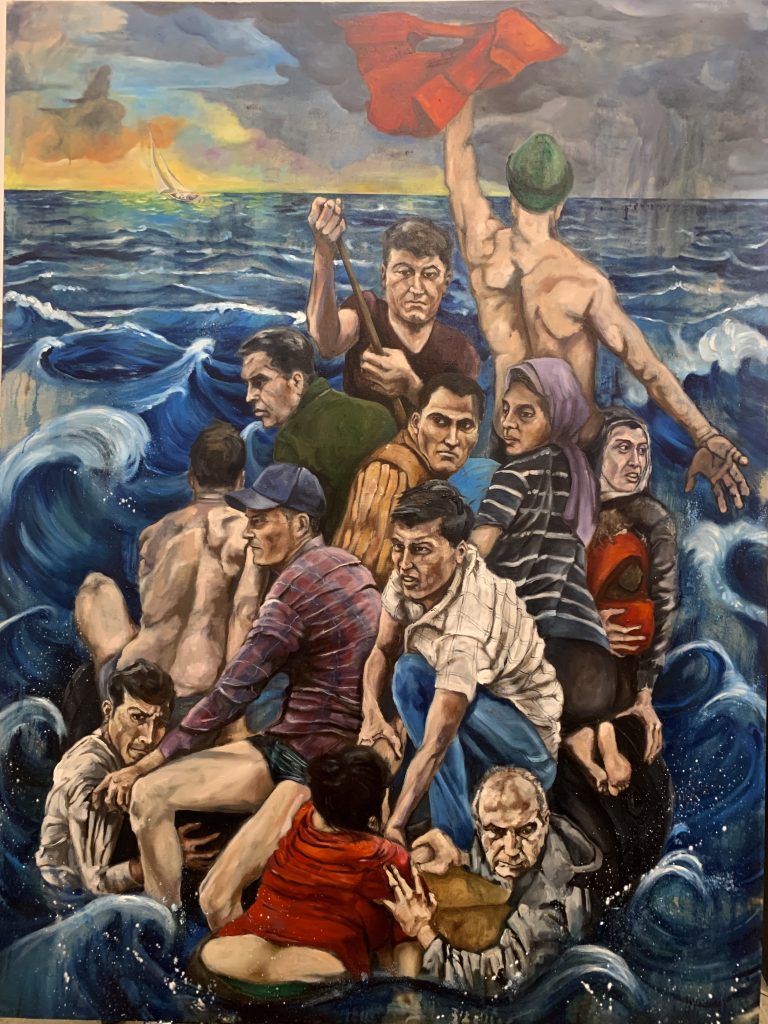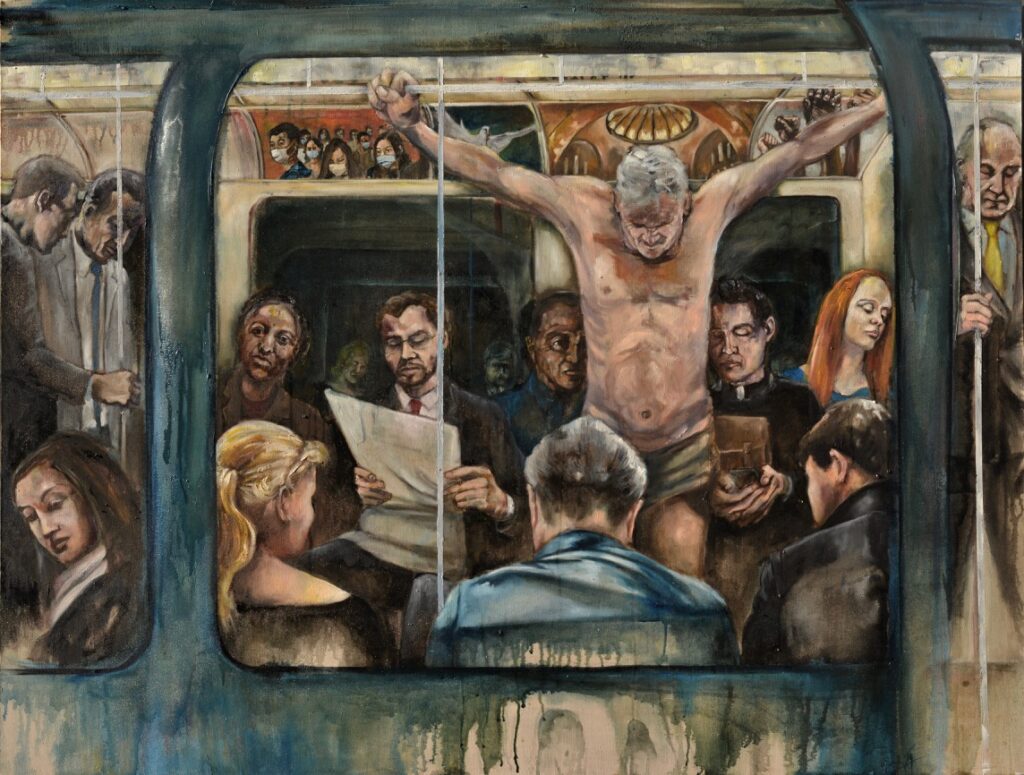
Art rooted within the realm humanity, enables a meaningful aesthetic and story telling is the vehicle of towards are a relatable art. The narrative form opens literary possibilities of analogy and metaphor, it builds a frame for the political, and it becomes personal exploring expressions of the psyche and emotions. However the story in art, as Walter Benjamin laments, is increasingly becoming “remote”.
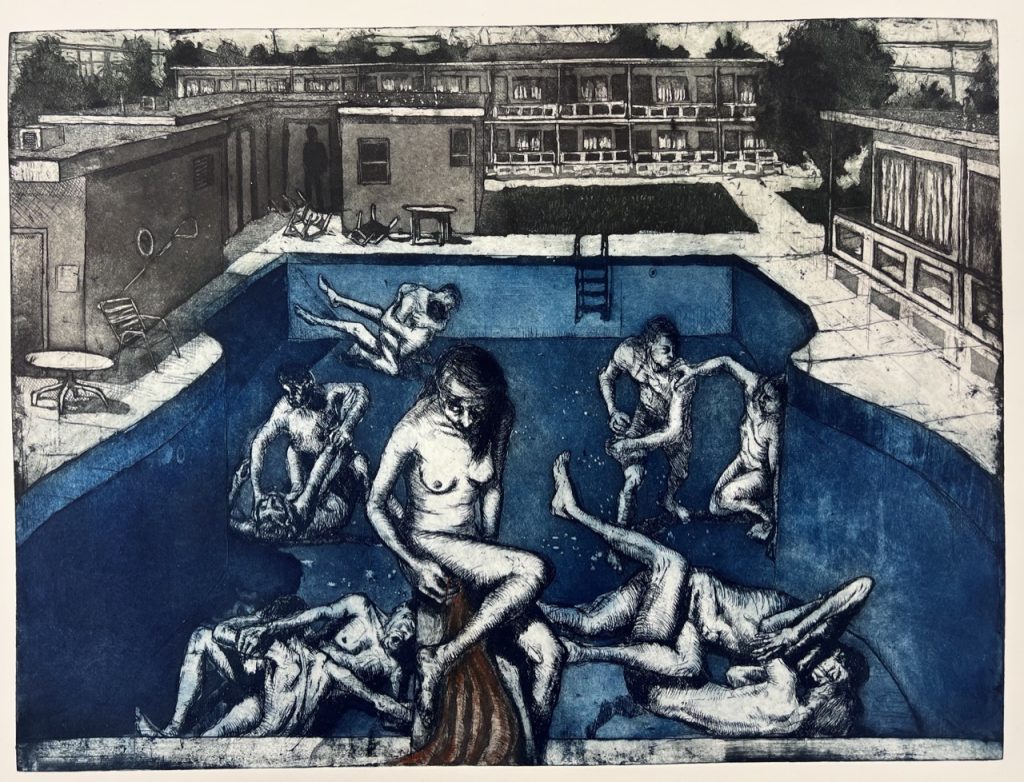
In a meditation on fiction Ken Lerner book re-commits to the novel because in-it lies “more interesting possibilities than determinism”. We are increasingly seeing people defined by their skin-colour, sexuality, age, gender, class, and privilege, the story allows us to see the possibilities and choices beyond these classifications stories explore what takes place when people collide. Returning to Benjamin he says: “it takes the representation of human life to its extremes … gives evidence to the profound complexity of living”. Continuing Lerner echoes Benjamin when he says “By integrating the social process with the development of the person (stories) bestows the the most fragile justification on the order determining it …it is this inadequacy that is realized”
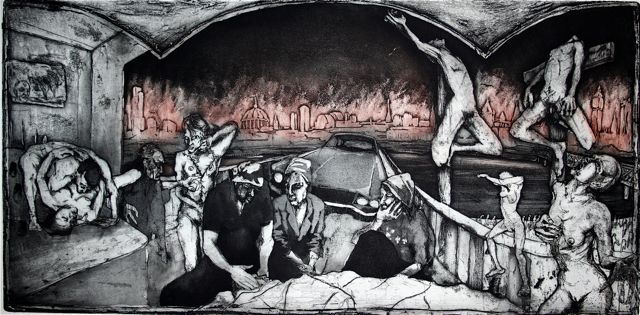
Reading, “My Name is Asher Lev” one is struck with its utilization of the Crucifix as the culminating conflict in the central axis of the book. Potok writes about painting a crucifixion, “For all the pain you suffered, for all the torment of your past and future, for all the anguish … For (God) whose suffering world I do not comprehend, for the love I have, for all the things I should have remembered but have forgotten, because the crucifixion is the aesthetic mould into which you can pour a paintings ultimate anguish and torment.”
This why crucifixions remain a potent iconography. Another author Sherwood Anderson writes “Everyone in the world is Christ and they are all crucified.” In this sense we can all identify with the image of Jesus nailed to the cross.
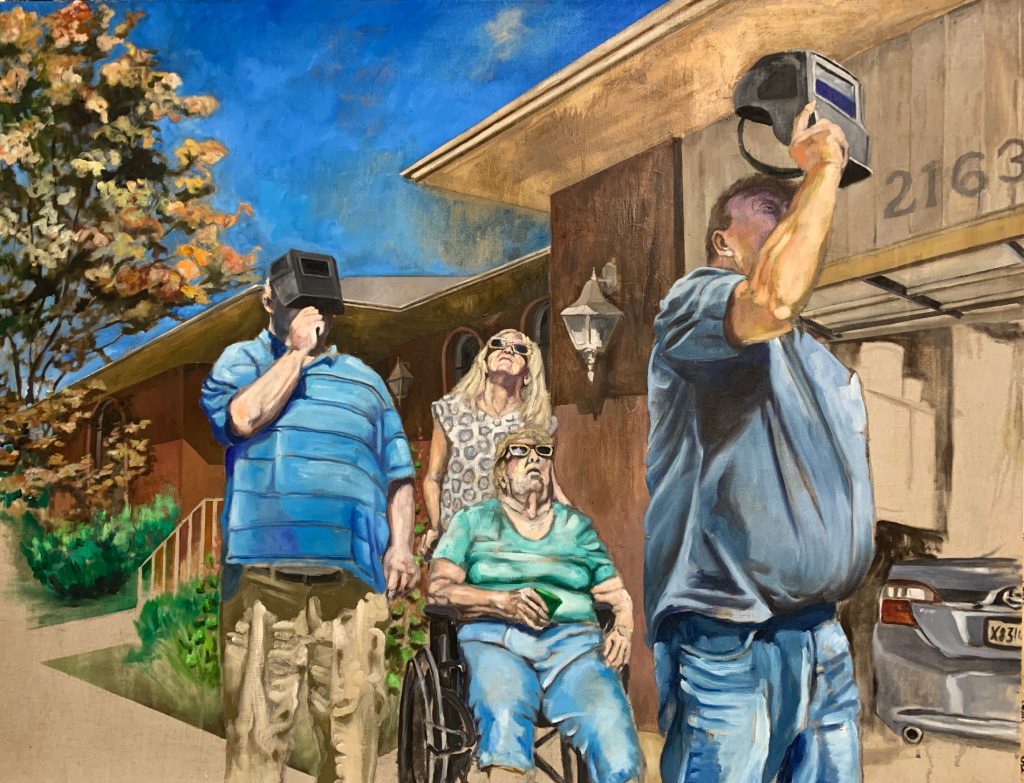
Or from another perspective Kundera refers to the idea of “Eternal return” in his “Unbearable Lightness of Being” when referring to life lived as light and heavy. Picking up on the existentialist notion that we should act as if everyone should do as we do Kundera discusses how heavy an existence this notion presupposes. Borges reiterates this idea when he says: “What one man does is something done, in some measure, by all men.” He continues, “For that reason a disobedience committed in a garden contaminates the human race, for that reason it is not unjust that the crucifixion of a single Jew suffices to save it.”
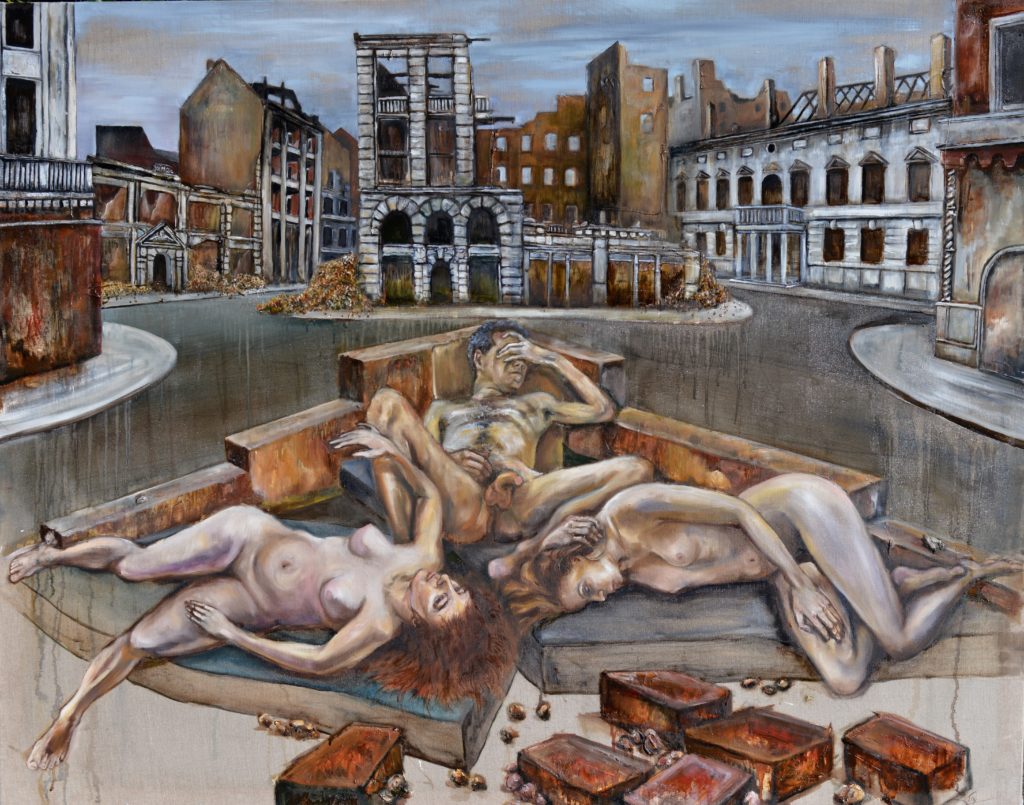
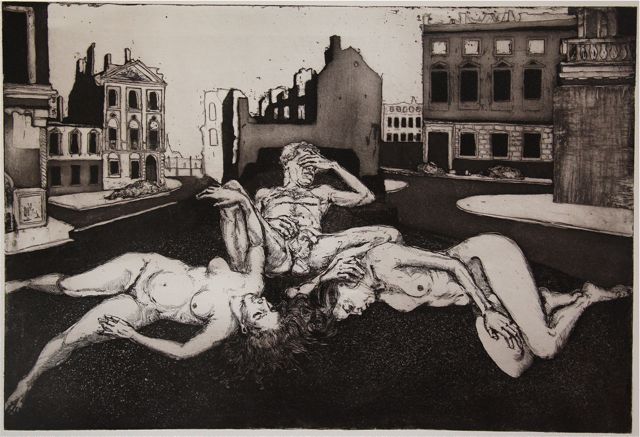
etching 12 x 18″
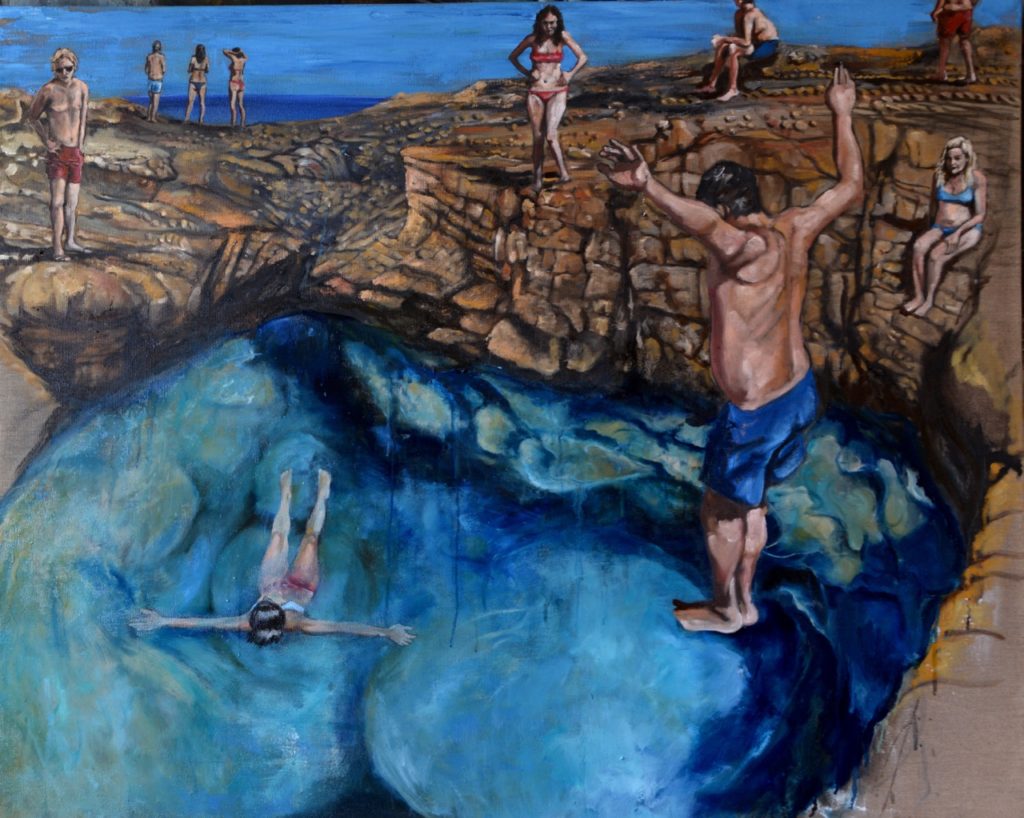
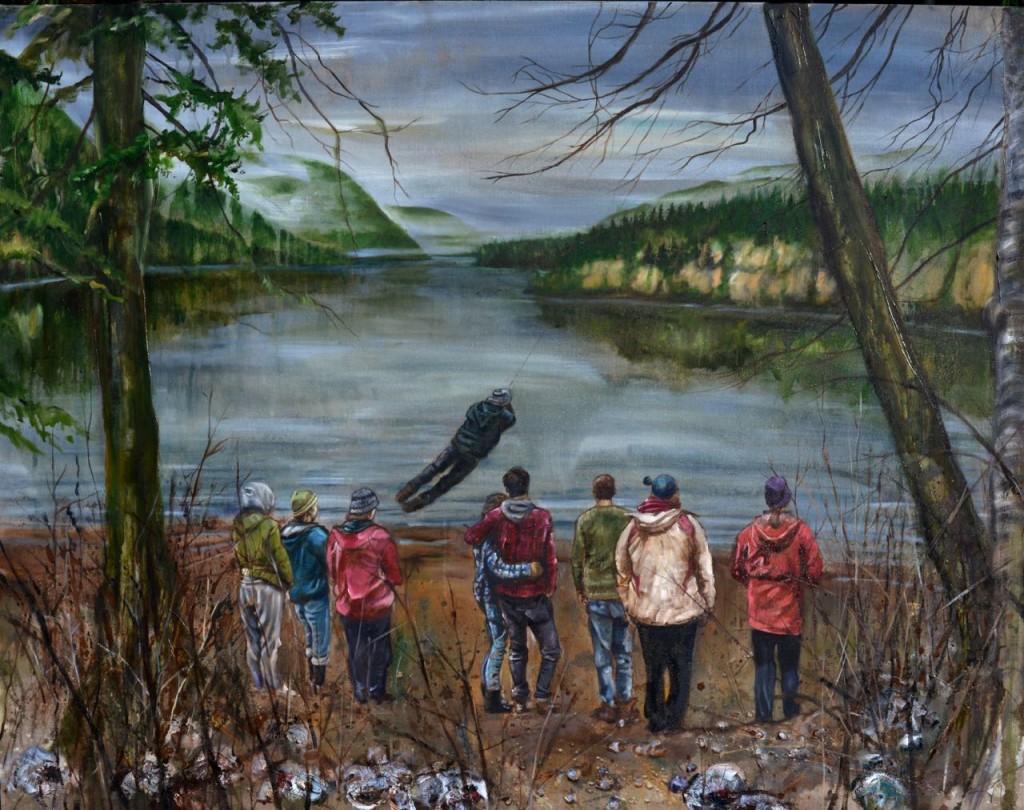
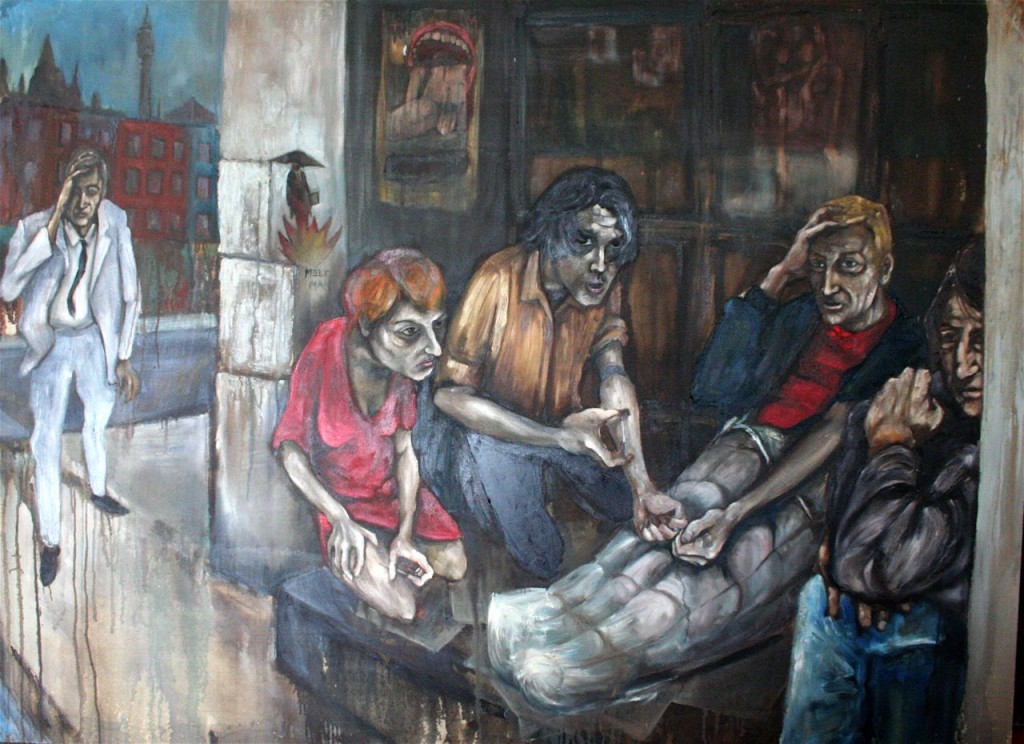
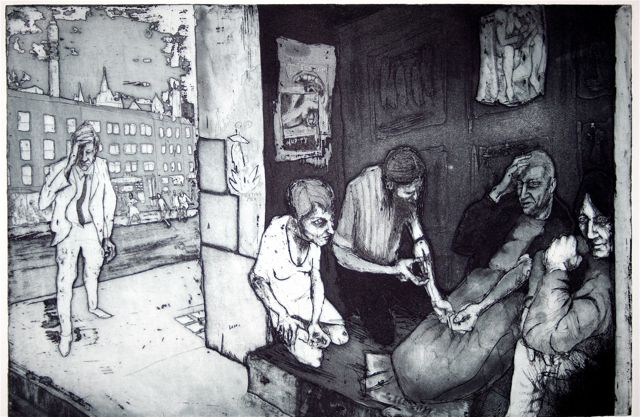
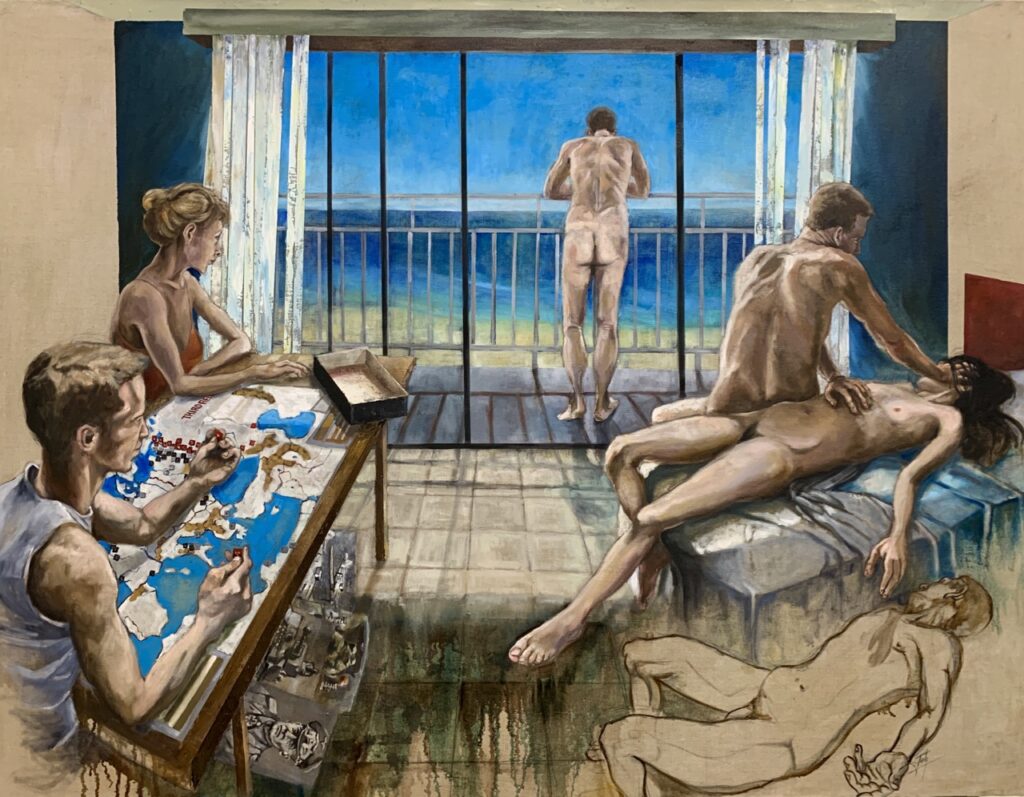
Living in Berlin I attended the Schaubuhne Theatre when they produced the play “2066” based on the novel written by Roberto Bolano. I had just read his book “Third Reich” and so I went home and influenced by the playwright’s ability to construct a new creative work from the novel. I stayed up late that night at the kitchen table and constructed the composition for this painting. I wanted to incorporate the game that is central to the title of the book, and I populated the composition with the stories key characters. Additionally, I wanted to reflect the books air of ambiguity around sexuality that can be at at once complex, intimate, obsessive, and coercive. The idea of memory or the unspoken or the missing other both private and historical were important elements to evoke.
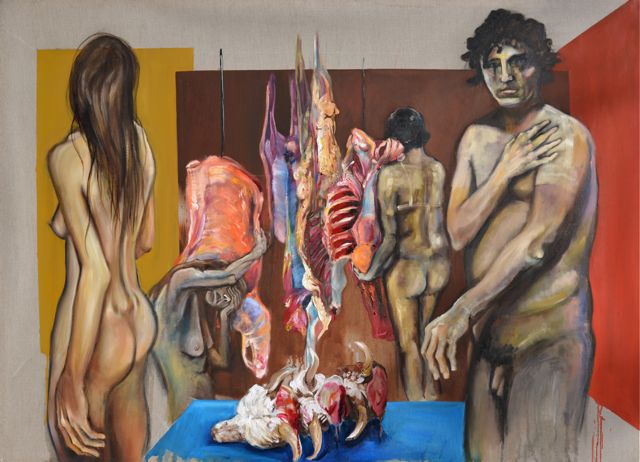
The painting above was also a product of a Schaubuhne’s production
